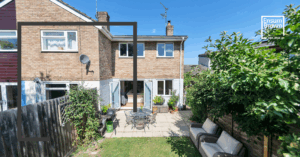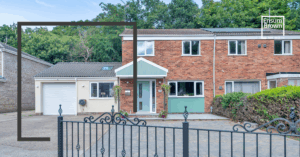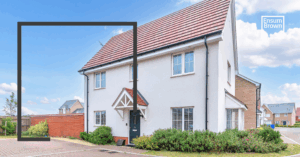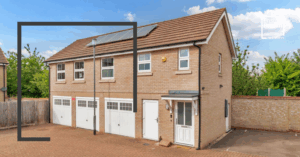Over the last five years, life has become a little trickier for Ware landlords, with changes to their taxation status, mortgage interest relief and an additional 3% stamp duty for a buy-to-let property, and has made lots of Ware landlords ask themselves:
‘Is buy-to-let in Ware still worth the risk?’
Regarding taxation, in 2016, the Government added a 3% supplement in stamp duty on all buy-to-let properties. Then, in 2017, the Government started to reduce mortgage interest by stopping landlords from deducting the interest they paid on their mortgage before paying tax on the rental profits and replacing it with a flat rate tax credit based on 20% of the interest they spent on their mortgage.
There would be no effect if a Ware landlord were a basic rate 20% taxpayer. Yet Ware landlords who were higher-rate (40%) or top-rate taxpayers (45%) saw an effect as their tax relief was cut in half.
So, is buy-to-let in Ware still an advisable investment?
The response to this question is much more significant than the issue of taxation.
To a large degree, as with all investments, it depends on why you are investing and what your final objective is. Let me expand.
The rewards of Ware buy-to-let.
You can earn money two ways with buy-to-let.
The first is the rental income from the property.
The average rent achieved in Ware is £1,268 pcm, a rise of 7.7% in the last 12 months.
This rent is expressed as a yield and is described as a percentage figure that’s calculated using the annual rental income and dividing it by the value of the buy-to-let property.
Landlords and buy-to-let investors use rental yield to judge and measure the value of their rental investments and portfolios. E.g. rent is £1,000 per calendar month (pcm), which means the annual rent is 12 x £1,000 = £12,000. If the property is worth £180,000, the rental yield is £12,000 divided by £180,000, which, when expressed as a yield percentage, is 6.67%.
The average yield in Ware is 3.3%.
Some areas in Ware can easily achieve a 4.8% to 6.3% yield, sometimes even more, depending on your choice of property and type of tenancy you wish to have.
If yield is your number one focus, the highest average yield in the UK can be found in Bradford City Centre, where it is 12%, Hyson Green and Radford in Nottingham at 9.6% and Pontypridd at 8.7%, while other areas in the UK can be as low as 2.2%.
So indeed, is the best strategy to go for high-yielding properties?
The problem with pursuing high-yielding Ware buy-to-let properties is that you usually must compromise on the property’s capital growth to attain that high yield.
The second way to earn money with buy-to-let is capital growth as your Ware property increases in value.
SG11 property values are 5% higher than 3 years ago.
A reasonable return in anyone’s books.
Of course, this all depends on the rent coming in, yet you can buy landlord insurance to cover against loss of rental income, tenant damage and legal costs.
Interestingly, using Government data and Industry data, Denton House Research found that in the first lockdown landlords who managed their rental properties themselves were 272.5% more likely to be in arrears of 2 months or more (compared to those who utilised the services of a letting agent to manage their property).
The drawbacks of Ware buy-to-let.
Your tax bill is higher today than a few years ago, but isn’t everyone’s?
If Ware property prices fall, the capital you invested will reduce, yet if it sat in the bank, it would decline in value anyway.
Being a landlord is a big responsibility, with over 170 pieces of legislation and orders to comply with. That’s where a suitable letting agent can help you with your rental property to ensure you remain compliant.
I recommend Ware landlords consider all options to maximise their rental income whilst reducing their outgoings concerning their rental property.
Rents are rising in Ware (as mentioned above), and many Ware landlords appreciate the demand-led increases in their rent. And let me ask you, why shouldn’t they, as they have been exposed to many legislative and taxation changes over the last five years?
Ok, last point and the elephant in the room.
Will there be a house price crash, and should Ware landlords wait for it?
A house price crash conjures up a big event that makes house prices go down, and it certainly happened like that in 1988 with the removal of dual-MIRAS tax relief on mortgages and the Credit Crunch in 2008. Yet this time, it’s different.
As there is more normality and balance in the Ware property market at the moment (compared to 2021/early 2022), the price that is being paid today on most houses in Ware is not as extreme or as extravagant as what was being paid in 2021/early2022 (when people were outbidding each other).
Therefore, if you were to look at the house price indexes going into the spring and summer of 2023, then there will be a reduction. The doom-mongers and newspaper editors will call that a house price crash, yet I see it as the market easing back to normality.
A massive driver behind landlords and home buyers ‘waiting for a house price crash’ is that they fear they have ‘missed the boat’ when it comes to buying/investing.
There is always newspaper (and now social media) attention when house prices explode. This means people quickly feel pressure to enter the ‘property market’, as everyone is making money, yet they aren’t.
The problem is that during the previous boom phases (the late 1980s and early/mid-2000s), house prices increased quicker than some people could save money for their deposit (for a house purchase). They saw their friends and acquaintances snapping up buy-to-let deals and they were missing out on the spoils of house price growth. As a result, many of these excluded house buyers judged that a house price correction was foreseeable, inevitable, and sometimes even needed. Not with any rational economic argument, but classic FOMO (Fear of Missing Out).
Yet a ‘house price crash’ isn’t the silver bullet that many think it will be.
‘House price crashes’ virtually never drop house prices to reasonable levels, and in fact, they have a lot of additional effects that make house buying even harder.
Investing in buy-to-let is a long-term investment. Remember what I said at the start. It would help if you decided why you’re getting into buy-to-let investment and when you will get out (and what you want to get out of it). Buy-to-let has advantages and disadvantages, but it is something tangible and something that investors can understand.
The UK needs to build more houses, so the demand for rental properties will only continue to grow.
The heady days of the early 2000s, when anybody could make money from any property, though, have gone. With increased legislation and taxation, you need the advice of a great agent to guide you on what to buy (and not to buy) for an excellent yield, incredible capital growth or a balance of the two. That agent should be able to find you a great tenant who will pay the rent on time and look after the property to ensure that when they leave, your investment is returned to you in the best condition possible.
If you would like to pick my brain, whether you are considering becoming a landlord in Ware, an existing landlord (irrespective of which agent you use) or even a self-managed landlord, do not hesitate to pick up the phone to me.
I will tell you what you need to hear, not necessarily what you want to hear.





